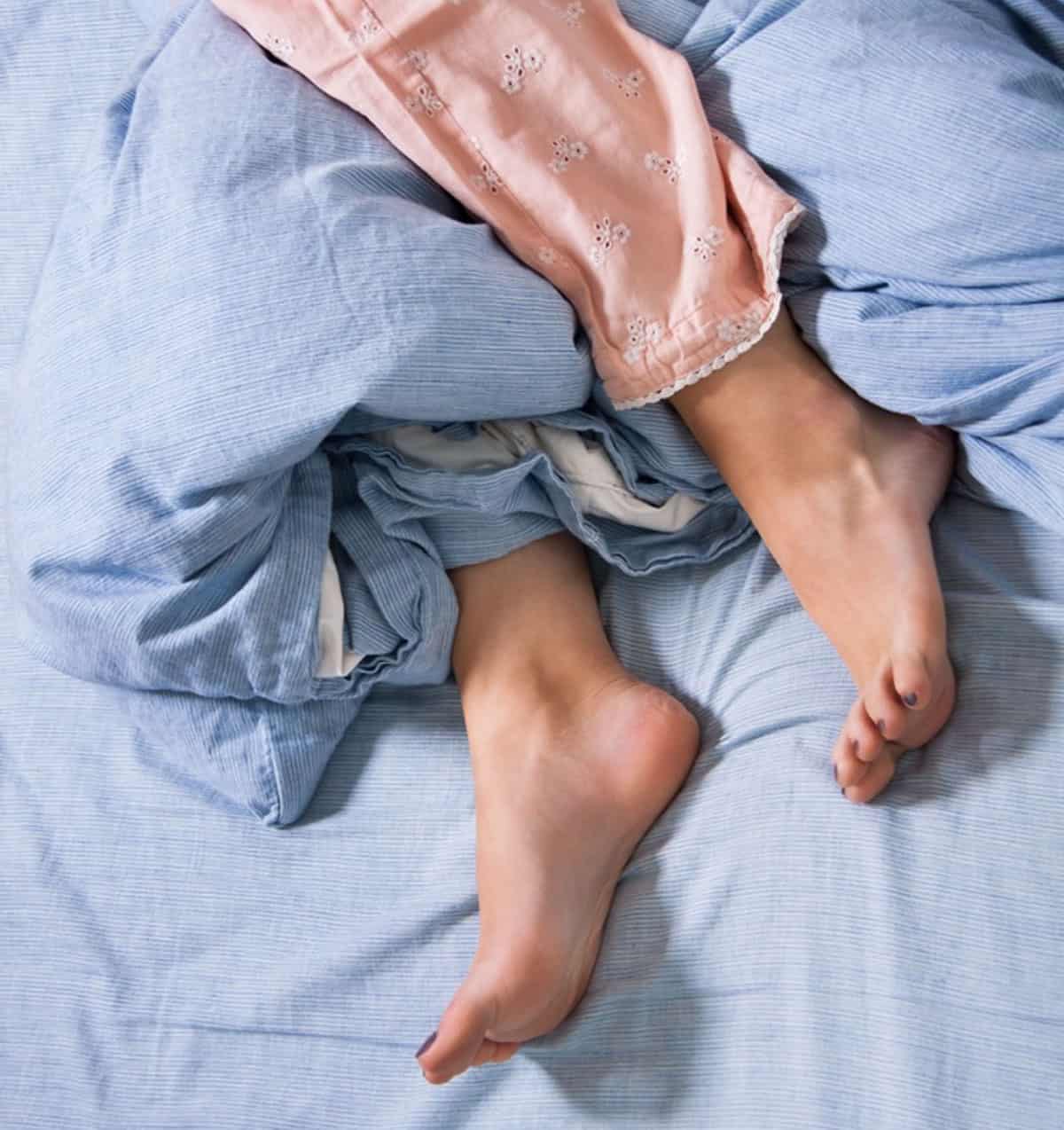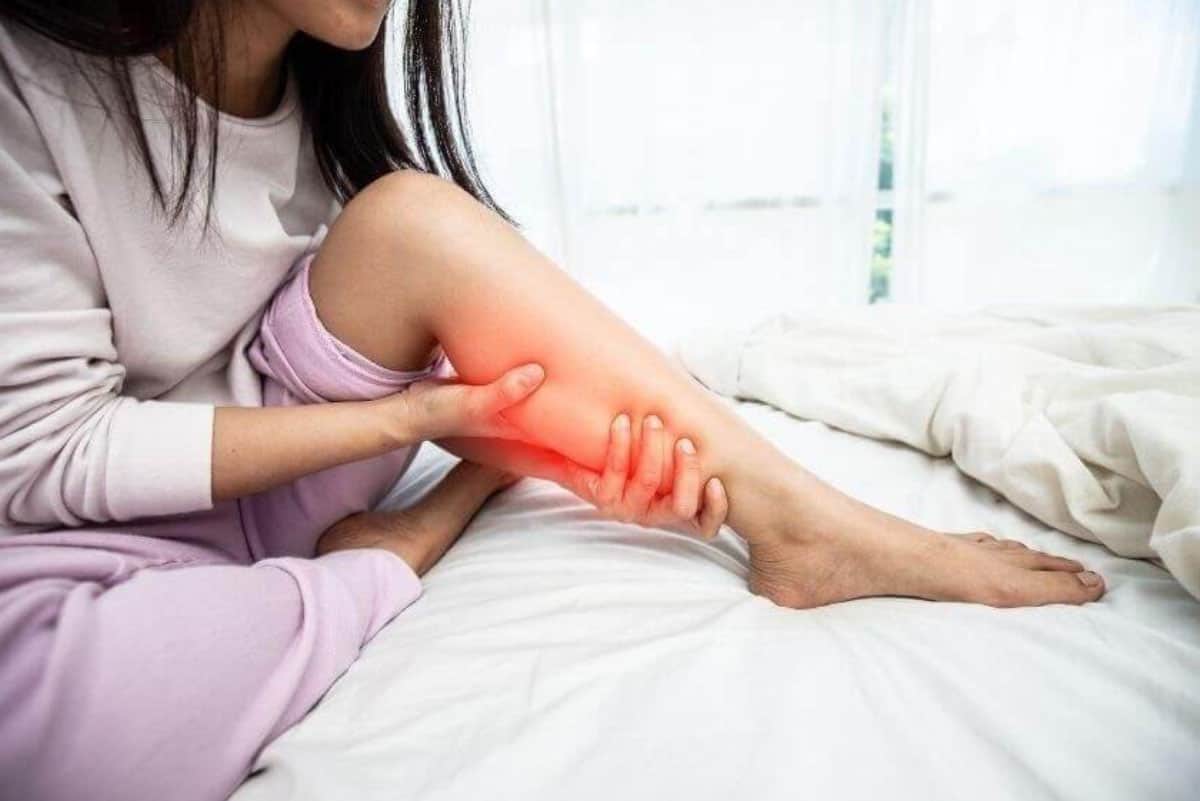Is pain in your legs causing you to have sleepless nights?
It is very common to experience pain in your legs that can easily cause exhaustion and daytime fatigue from sleep deprivation. You may feel a dull ache, stabbing pain or strange tingling sensation in your legs.
Your legs have an important role of holding your body throughout the day, however this doesn’t mean they should be causing you pain at night. A podiatrist can often help you diagnose and treat your troublesome leg pain.
Below we have listed some common causes of leg pain at night. If pain continues, come book in to see one of our podiatrists.

Musculoskeletal
01. Inflammation of muscles or tendons
It is common to experience pain in your muscles and tendons during the night as these muscles are healing while you sleep. It is important to seek medical advice if this is occurring as it may indicate a more severe injury.
To temporarily help ease the pain you could consider taking anti-inflammatory medication (if no other contraindications), using cold/heat packs, find a comfortable position in bed to offload this area.

02. Cramps
Cramps refer to a sudden, painful muscle contraction that occurs by itself. They can occur during vigorous prolonged activity or immediately afterwards, such as after running a marathon. Apart from repetitive use, maintaining an uncomfortable posture for a long period may also cause muscle fatigue and cramps.
Other causes of cramps include:
- Dehydration – abnormal (high or low) electrolyte level, sodium, potassium and calcium, low blood sugar level
- Excess alcohol, drugs such as diuretic, nifedipine, salbutamol
- Nerve disorders
- Later stages of pregnancy
We recommend a healthy well-balanced diet, staying hydrated, and considering a magnesium supplement.

03. Bone Fracture
Achiness within the bone itself that is present during the day and night can be associated with a bone fracture. Your pain typically doesn’t settle with rest. They generally occur as a result of a single incident, such as a major fall or heavy knock.
We recommend seeing a medical professional as soon as possible to avoid further complications.
04. Artery disease
When there is not enough blood is getting to your feet, a lack of circulation can cause pain in your leg muscles. This pain can affect one or both sides and is generally in the calves. You often help to alleviate this pain by hanging your legs over the side of the bed or standing up, which sends blood pumping back through the feet. You can also experience this pain with activity, and pain is relieved almost immediately by cessation of activity.
An increased risk of peripheral arterial disease is commonly associated with the following:
- Smokers
- Diabetics
- Cardiovascular disease
- High cholesterol and high blood pressure
- Obesity
- Elderly
Our podiatrists can help diagnose circulation problems and recommend an action plan going forward. We commonly use Doppler and perform Ankle Brachial Index (ABI) to determine the extent of the vascular supply.

05. Vein issues
Your veins in your legs have a hard job to do as they are both farthest from the heart and working against gravity. Varicose veins are swollen and twisted veins, that aren’t working as well as they should, and over the course of the day, the pressure in your leg can increase from leaky valves or weakened vein walls. This creates an achiness pain and heavy feelings in your legs, which worsens at night after a day spent mostly on your feet.
To help manage this issue:
- Calf raises when you are seated to aid compression of the veins to push the blood back up to the heart
- Elevating your legs to encourage gravity to aid returning of blood flow back up your legs to your heart
- Walking and being active gets your blood moving
- Discuss your symptoms with your GP
- Medical grade compression stockings

06. Deep vein thrombosis/blood clots
Blood clots often occur to people who have recently been travelling, especially those that were on long distance flights or sitting for long periods of time.
Symptoms of a DVT include the following:
- Pain and tenderness in the leg
- Pain when extending the foot
- Lower leg, ankle and/or foot swelling
You may be more prone to develop DVT if you:
- Spend long periods of time sitting
- Are overweight
- Have a history of heart failure
- Are of advanced age
- Have varicose veins
- Take oral contraception medication
- Have high levels of cholesterol
- Smoker

07. Pregnancy
You will often feel achiness and tiredness in your legs if you are pregnant. This occurs because of the excess blood volume and extra stress you are placing on your body as you carry more weight. Your growing baby also puts pressure on the nervds and blood vessels that go to your legs.
Here are some tips to help relieve your leg aches:
- Stretch your calf muscles by flexing and releasing each foot a few times
- Take short walks throughout the day to boost blood flow
- Avoid standing or sitting with your legs crossed for long periods
- Take a warm bath before bed
- Massage your legs throughout the day and especially before bed
- Prop your legs up on a pillow (make sure your legs are elevated above your heart)
- Wear compression leggings or socks
- Increase your potassium intake
08. Nerve pain
Nerves in the leg may become inflamed, compressed, or degenerated as a result of mechanical or chemical irritants. Nerves may also become damaged due to associated conditions such as diabetes or nutritional deficiencies.
Nerve pain is typically described as sharp, shooting, electric-like, or searing pain. It may also produce a sensation of hot or warm water running down the thigh and/or leg. The pain may be intermittent or constant.
Often movement can help with your nerve pain. Performing gentle movements to encourage the muscles to warm up through improved circulation can be an effective way to ease your symptoms.





